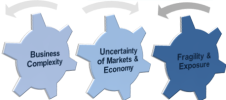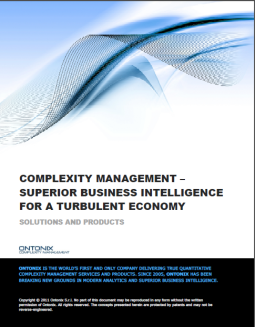Ontonix:: The 787 Dreamliner, Complexity, Systemantics And Linear Thinking
Tuesday, 29 January, 2013 Leave a comment
High complexity regimes is uncharted territory. While most people struggle with definitions of complexity (many still think it has to do with ants or storms of starlings) it is hitting us hard on many fronts. In the past few decades we have conceived, designed and constructed extremely complex systems and infrastructures on which our lives depend to a very large degree. The list is endless but it all comes down to huge networks, systems of systems, computers, software, information and communication, the internet, etc. Such systems are indeed very complex and yet they have been designed without taking complexity into account. This is paradoxical to say the least. Complexity is the hallmark of our times and yet complexity is not a design-attribute when it comes to putting in place sophisticated products, systems or infrastructures. Engineers should be the first to be concerned with measuring complexity and keeping it under control in any manufacturing projects, just like it happens for costs and schedules. What happens if you throw complexity under the carpet is that it will strike back in the form of guaranteed cost overruns and late delivery. The A380 and the 787 Dreamliner immediately come to mind. And then, once the product is on the market, high complexity will strike again in the form of fragility. Just think of how sophisticated financial products have run out of control and what they have done to our global economy.
Designing highly complex and sophisticated products while taking complexity into account has been described in our old blog. Today, there is a cloud-based tool for doing precisely that. Visit the Design4Resilience website.
However, it is even more shocking to discover how linear thinking still dominates our thinking and philosophy. Unfortunately this applies to many engineers too. In a recent article on the 787 battery problem we read: “…. One key question for safety investigators is how the battery’s eight individual cells became volatile even though the overall voltage to the battery was steady and didn’t exceed the 32-volt capacity, officials have said.”
The logic is the following:
- A system is monitored by checking a certain number of parameters (hundreds, thousands).
- If each parameter is within bounds then all is OK.
- The worst case is when all (or many) parameters reach the end of the scale.
Ontonix – Complex Systems Management, Business Risk Management.



















